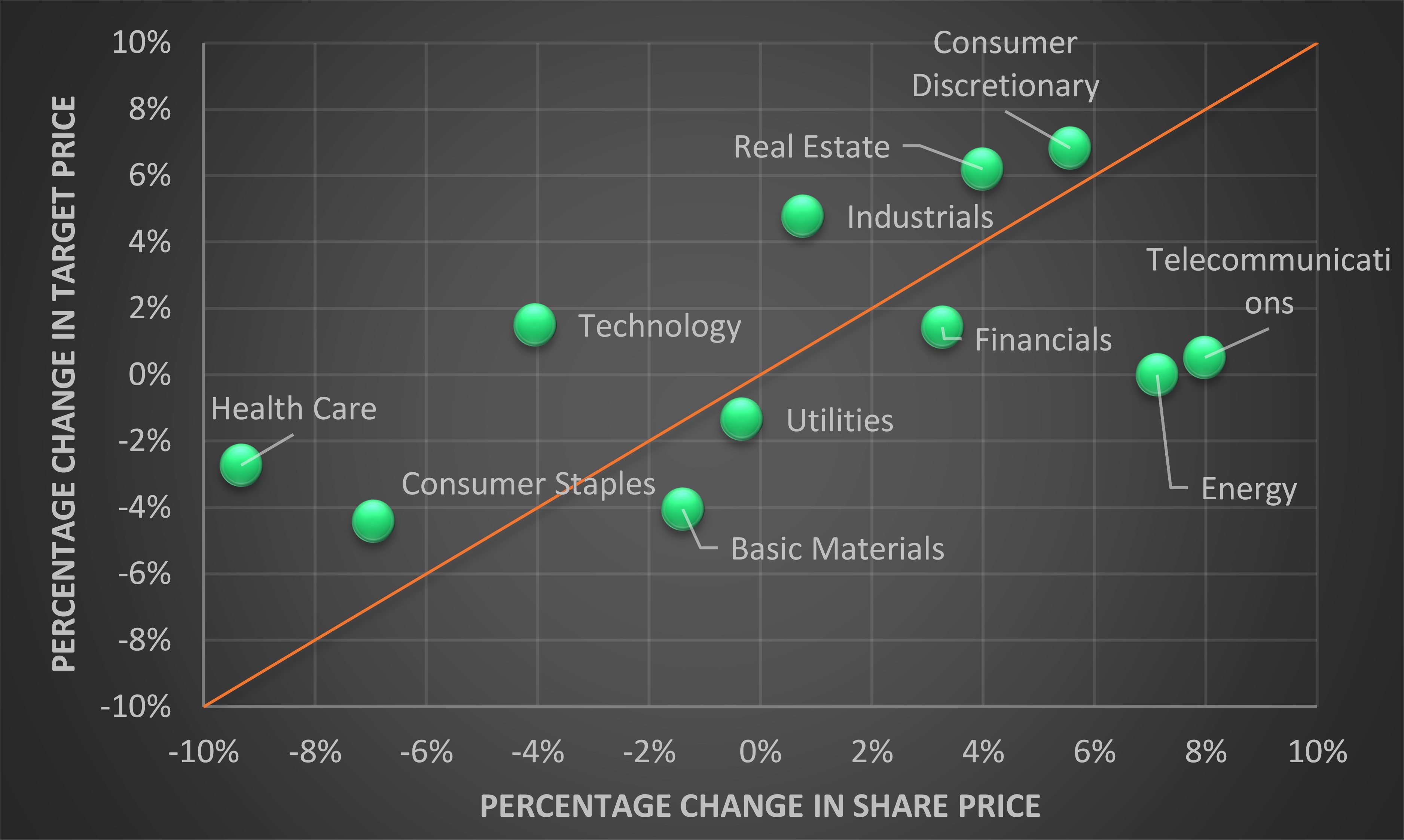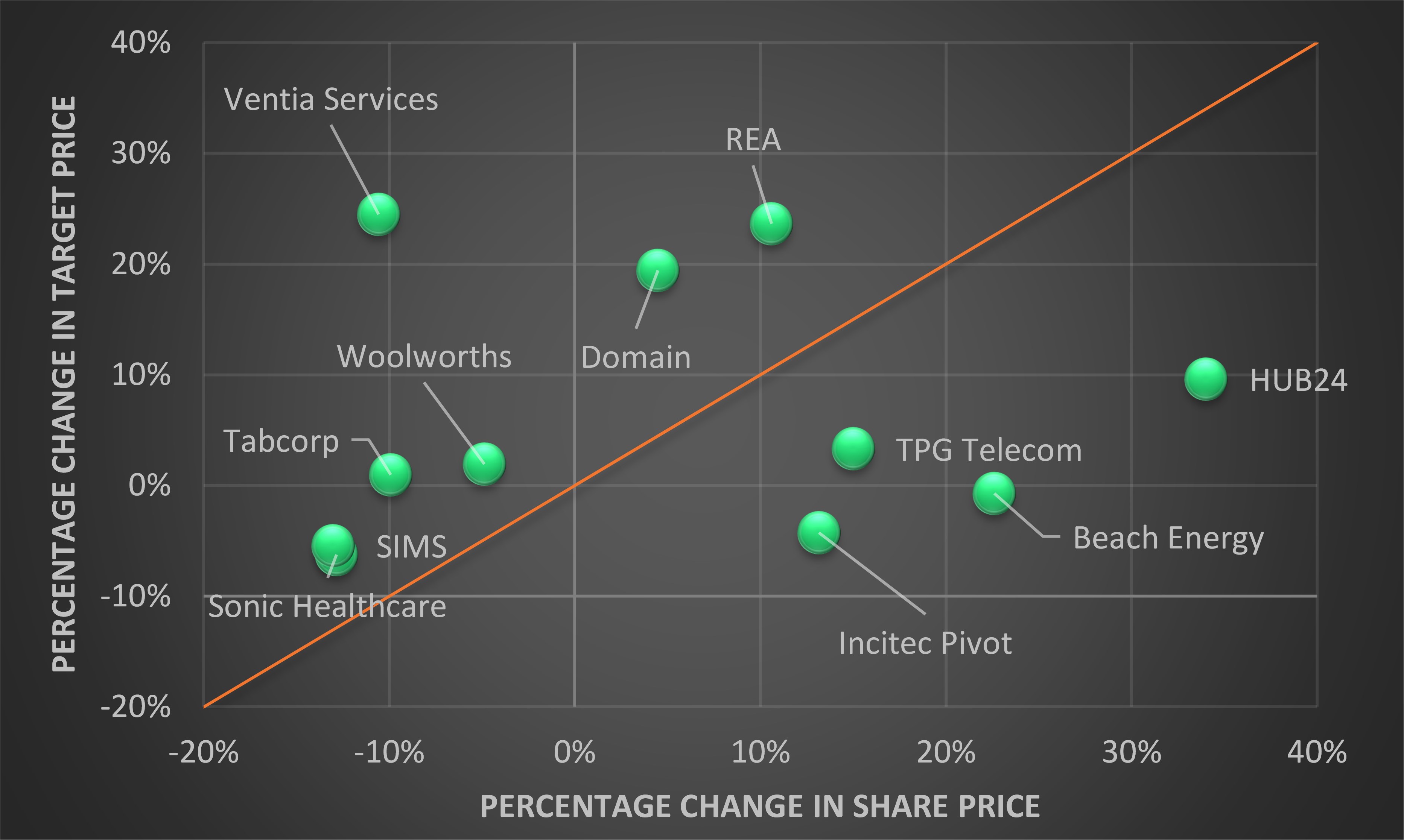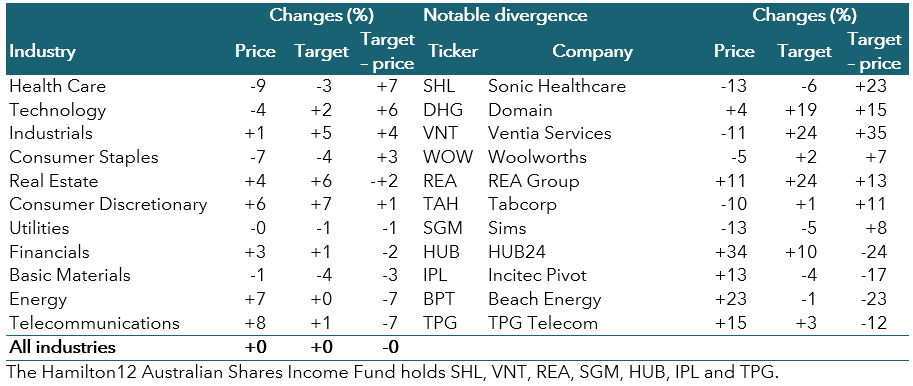Where do analysts and the market disagree right now?
Introduction
Systematic investing is making a series of educated bets in a well-diversified portfolio, in the expectation that, on average, investment signals are persistent. One investment signal worthy of attention is analyst target prices. Research tells us that analyst target prices have investment value,[i] provided they are timely, [ii] based upon sophisticated valuation methods[iii] and unbiased.[iv][v] The latter two criteria could jointly be labelled as diligence. With a vast array of research ideas available to investors, can we systematically filter the most value-relevant output from analysts and incorporate this into stock selection? One approach is to only pay attention to analyst output that is updated frequently, because this signals a timely response of analyst target prices to new information.
The 2023 fiscal year reporting season provides an opportunity to measure disagreement between the market and analysts for selected industries and stocks. If we isolate the analysts who estimated target prices and earnings just before the end of the financial year, and promptly revised those projections after reporting season, we can compare the market reaction to that of the analysts. We will have a signal of where the market has over-reacted and under-reacted to earnings, relative to analyst views. This means that for those following analyst research in portfolio formation, they will have the most value-relevant information.
Method
I compiled individual analyst target prices and fiscal year 2024 earnings per share forecasts for analysts who made timely revisions to their prior view. The analyst must have released a target price and fiscal year 2024 earnings per share forecast within 60 days of 30 June 2023, and then revised both of those projections within 60 days of 18 September 2023. This generated a dataset of projections for 305 ASX-listed companies and 817 analyst forecasts. This allows a comparison of share price changes to target price changes. If for a given industry or company analyst target prices change by less than the share price, analysts consider the share market to have over-reacted; if analyst target prices change by more than the share price change, analysts consider the share market to have under-reacted. What follows should not be considered investment recommendations, but merely one issue to be considered by investors in forming their portfolio.
In aggregate for the market, analysts revised up their target prices by 0.1 per cent and revised down their FY2024 earnings forecasts by 0.3 per cent. The premium of target prices to share prices decreased from 7.2 per cent to 6.5 per cent. The target price premium is at the lower end of the normal range. The average target price premium since the start of 2013 is 10.8 per cent. Over this time period, the target price premium has been 5 per cent to 16 per cent, 95 per cent of the time. In other words, analysts are a little more pessimistic than in recent years, but within a typical band.
Target price revisions by industry
The figure below shows the percentage change in share price on the horizontal axis and the percentage change in target price on the vertical axis for ICB industries, weighted by market capitalisation. ICB industries for which analysts are more optimistic than the market plot above and to the left of the orange line; industries for which analysts are more pessimistic than the market plot below and to the right of the orange line.

Health care and technology stand out as industries which experienced material share price declines – with falls of 4 per cent to 10 per cent – but which analysts considered to be an over-reaction. Analysts only revised down their target prices by 3 per cent for health care and revised upwards their target prices for technology by 2 per cent. In contrast, telecommunications and energy stocks rose by 7 per cent, but analyst target prices for telecommunications only increased by 1 per cent and target prices for energy stocks were unchanged.
ANALYST AND MARKET DISAGREEMENT FOR INDIVIDUAL STOCKS
To illustrate analyst and market disagreement, I considered individual stocks which had market capitalisation of at least $2 billion on 30 June 2023 (128 stocks out of 305 in the analyst revision sample). I selected stocks for which there was a large divergence between the share price change and the target price change, and for which the company currently pays fully-franked dividends. The table below shows selected stocks next to their industry, sorted by industry according to analyst optimism compared to the market, with relative analyst optimism and pessimism illustrated in the figure. Think of these as examples of material disagreement between analysts and the market. The evidence is that analysts have a small edge in identifying mispriced securities, so there will certainly be instances in which target prices converge to share prices, rather than the other way around. Compared to the market, analysts are optimistic towards Sonic Healthcare (ASX: SHL), Domain (ASX: DHG), Ventia Services (ASX: VNT), Woolworths (ASX: WOW), REA Group (ASX: REA), Tabcorp (ASX: TAH) and Sims (ASX: SGM); and pessimistic towards HUB24 (ASX: HUB), Incitec Pivot (ASX: IPL), Beach Energy (ASX: BPT) and TPG Telecom (ASX: TPG).


Conclusion
According to prior research, analyst target prices have value-relevant information for investors. But this comes with a caveat: research must be timely, performed in a sophisticated manner and unbiased. For analysts making timely changes to their target prices and earnings forecasts, compared to the market, analysts are optimistic towards health care and technology, and pessimistic towards telecommunications and energy. In these four industries, analysts consider recent share market changes to be an over-reaction (falls in health care and technology and rises in telecommunications and energy). The over-reaction is about 7 per cent in all four industries.
References
Kerl, A.G., 2011. Target price accuracy, Business Research, 4, 74–96.
Endnotes
[i] Da and Schaumburg (2011)
[ii] Hao and Skinner (2023)
[iii] Da, Hong and Lee (2016)
[iv] Kerl (2011)
[v] Dechow and You (202)
4 topics
11 stocks mentioned